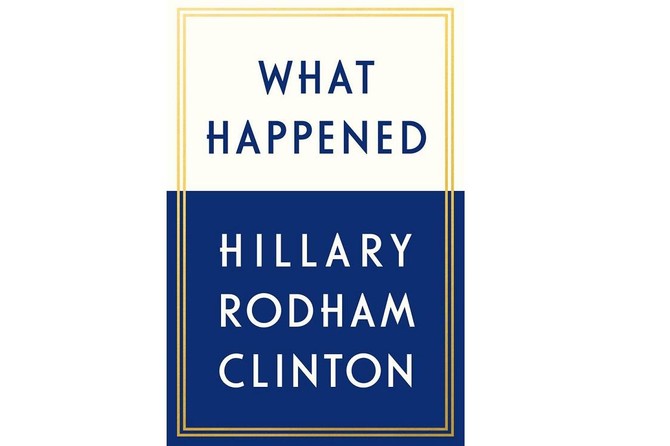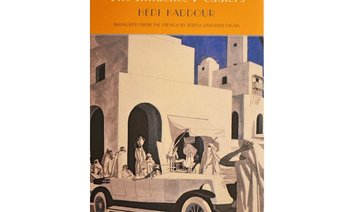She was the presumptive favorite in the 2016 US presidential election. She was also extremely qualified when compared to her inexperienced opponent. Yet, against all odds, she managed to lose to a divisive candidate who won in one of the most astounding victories in American political history. On the night of Nov. 8, 2016, when the results started pouring in, surprise gave way to astonishment as everyone asked the same question: What Happened to Hillary Rodham Clinton?
Everyone seems to have a theory as to why she failed to become the first woman president of the US. But what was going through her mind during that incredible election night? For the first time, Clinton looks back on the election in her book “What Happened.” She tells her side of the story with humor and sincerity and this poignant memoir will interest both her supporters and her detractors.
Clinton never imagined she write a book about the shocking loss, however, it is not a comprehensive account of the 2016 race as “that’s not for me to write, I have too little distance and too great a stake in it,” she writes.
She has chosen to focus on moments from the campaign, on people who inspired her and on the major challenges she has tackled during her nearly four decades in public service.
Despite the broad focus, it is natural that readers will wonder how she felt on the night of the election. Clinton, accompanied by her family and senior staff members, were staying at The Peninsula hotel, just a block away from Trump Tower. “The waiting was excruciating,” she admits. So, she decided to take a nap hoping that when she woke up, things would look better. When she got up, the atmosphere in her suite on the top floor was even gloomier and as the hours went by, the numbers were not getting any better.
“How had this happened? All our models, as well as all the public polls and predictions, gave us an excellent chance at victory. Now it was slipping away. I felt shell-shocked. I hadn’t prepared mentally for this at all. There had been no doomsday scenarios playing out in my head in the final days, no imagining what I might say if I lost. I just didn’t think about it. But now it was real as could be and I was struggling to get my head around it. It was like all the air in the room had been sucked and I could barely breathe.”
She gave her concession speech in a grey-and-purple suit that she intended to wear on her first trip to Washington as president elect. This is one of the many details that shows how Clinton was absolutely not prepared to lose. All her plans revolved around her victory.
Clinton spent the first day after her defeat following these dramatic events and doing very little else. She could not handle people’s kindness, sorrow and bewilderment and their explanations for how she had failed. “Bill and I kept the rest of the world out. I was grateful for the one billionth time that I had a husband who was good company, not just in happy times, but sad ones as well.” The next day, she finally reconnected with people, answering an avalanche of emails and returning phone calls.
Afterwards, she writes, she spent long hours walking with her husband and talking again and again about the unforeseeable loss. She also learned how to be grateful for the hard things. “My task was to be grateful for the humbling experience of losing the presidential election. Humility can be such a painful virtue.”
President Barack Obama played a key role in Clinton’s decision to run for president. He was well aware that his legacy depended, to a large extent, on a Democratic victory in 2016. “He made it clear that he believed that I was our party’s best chance to hold the White House and keep our progress going and he wanted me to move quickly to prepare to run.”
Clinton announced her candidacy in June 2015 and, amidst all the positive comments she received after her speech, she hardly paid attention to American journalist E.J. Dionne’s sharp remark: “Hillary Clinton is making a bet and issuing a challenge. The bet is that voters will pay more attention to what she can do for them than to what her opponents will say about her.”
We all now know that Clinton lost the white working-class vote, Trump garnered their attention with populist rhetoric and an excellent slogan — “Make America Great Again.”
Although Clinton dreams of a future in which women in the public eye will not be judged for how they look but for what they do, when she was campaigning, she always made time for her make-up and to have her hair done. “The few times I’ve gone out in public without makeup, it’s made the news,” she wrote in the book. Clinton even calculated how many hours it took her to have her hair and make-up done during the campaign. It came to 600 hours, which is equivalent to 25 days.
Clinton shares personal details in the book, for example, she tells readers that whenever she was traveling, she never went to sleep without calling her husband. These conversations kept her “grounded and at peace,” she writes, adding: “He’s funny, friendly, unflappable in the face of mishaps and inconveniences and easily delighted by the world…He is fabulous company.”
This book shows Clinton as we have never seen her before — vulnerable, forgiving and humble.
It leaves us all wondering, what will happen next?
Book Review: Hillary Clinton in her own words
Book Review: Hillary Clinton in her own words

What We Are Reading Today: ‘Chinese Espresso’ by Grazia Ting Deng

Italians regard espresso as a quintessentially Italian cultural product—so much so that Italy has applied to add Italian espresso to UNESCO’s official list of intangible heritages of humanity. In this book, Grazia Ting Deng explores the paradox of “Chinese Espresso”— the fact that this most distinctive Italian social and cultural tradition is being preserved by Chinese immigrants and their racially diverse clientele.
What We Are Reading Today: ‘Bartleby and Me’

Writers love to write about writing and none seemingly more so than Gay Talese, the journalist known as a pioneer of the American literary moment called “New Journalism.” This style of writing originated in the 1960s and ‘70s and combines journalistic research with creative non-fiction.
Talese started his career as an obituary writer at the New York Times and, later, as a magazine writer who ended up reluctantly penning the most widely read magazine articles of all time. He showcases some of that editorial wisdom — and reporting mishaps — in his 2023 book, “Bartley and Me: Reflections of an Old Scrivener.”
Now 92 years old, he writes vividly about his early reporting days and the stories behind the stories; he masterfully weaves in stray strands that somehow come together into a coherent narrative. Talese writes crisp copy. He writes about nobodies and somebodies with equal fervor.
He recalls his time as a young reporter on assignment where, at the insistence of his persistent editor, he attempted to sit down for an interview with the elusive and super-famous star Frank Sinatra. Talese recounts how he repeatedly tried — and failed — to pin down “Ol’ Blue Eyes” while chasing him around California in the 1960s. He eventually published his distinctively titled profile, “Frank Sinatra Has a Cold,” in the April 1966 issue of Esquire. That piece of writing is considered one of the most celebrated pieces of magazine journalism to date.
Talese’s tales are mostly centered around his time in New York. He recalls things in meticulous detail — for example, pointing out the exact address and precise building within a neighborhood to help the reader visualize the space. The city is always a leading part of the story.
“New York is a city of things unnoticed,” he wrote 60 years ago, something that could easily be written today. He recalls the early days of his journalistic career in New York, churning out newspaper copy and still, now, being ever-so-curious about everything. The pages of this book show that we all, alongside him, still have much more to notice.
The title of the book was inspired by American author Herman Melville’s short story, “Bartleby, the Scrivener: A Story of Wall Street,” published in the 1800s. This is a social criticism piece about a lawyer who hires a peculiar scrivener or clerk, Bartleby, and the adventures (or misadventures) that ensue.
In his version, Talese shares with us a fresh piece of original reporting titled “Dr. Bartha’s Brownstone,” which is his version of “Bartleby.” This time, however, Bartleby is an unknown doctor who makes his bombastic mark on the city one random summer day. It is a brilliant piece of journalism about journalism.
What We Are Reading Today: ‘The Proof Stage’ by Stephen Abbott

The discovery of alternate geometries, paradoxes of the infinite, incompleteness, and chaos theory revealed that, despite its reputation for certainty, mathematical truth is not immutable, perfect, or even perfectible.
Beginning in the last century, a handful of adventurous playwrights took inspiration from the fractures of modern mathematics to expand their own artistic boundaries.
What We Are Reading Today: ‘The Royal Inca Tunic’ by Andrew James Hamilton

The most celebrated Andean artwork in the world is a 500-year-old Inca tunic made famous through theories about the meanings of its intricate designs, including attempts to read them as a long-lost writing system.
But very little is really known about it. “The Royal Inca Tunic” reconstructs the history of this enigmatic object, presenting significant new findings about its manufacture and symbolism in Inca visual culture.
What We Are Reading Today: ‘The Evolution of Power’ by Geerat Vermeij

Power has many dimensions, from individual attributes such as strength and speed to the collective advantages of groups.
“The Evolution of Power” takes readers on a breathtaking journey across history and the natural world, revealing how the concept of power unifies a vast range of phenomena in the evolution of life—and how natural selection has placed humanity and the planet itself on a trajectory of ever-increasing power.

















